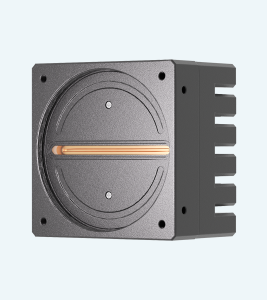Machine vision in the industrial sector has enormous contributions to automation, moving production processes into a completely higher level of precision and economic efficiency. Among the main benefits is improvement of inspection accuracy. Machine vision systems use cameras with a resolution that can detect defects as small as 0.01 millimeters, often far below what human inspectors would be able to identify. The high accuracy rate helps to guarantee the quality of products is error-free enabling overall product reliability by 20-30%, plays an important role in reducing defective goods.
Machine vision systems are also much faster than manual inspections. For example, a vision system may inspect 1,000 items per minute whereas a human inspector might be able to do only about 100 in the same period of time. Expediting production lines helps manufacturers to fulfill more orders while upholding quality. Automation also results in lesser inspection times as the time taken for quality checks is reduced by almost 50%.
Another important benefit is cost savings. Machine vision systems help reduce the reliance of manual labor for lower operational costs. While an industrial machine vision system will have to be paid between $10,000 and $50,000 depending on the required resolution there are usually large long-term savings later. While an ROI of 1-2 years is possible just from the reduction in labor costs and fewer defective products,
Machine vision improves consistency and repeatability, removing the variability in product inspection which may come with a human operator. This kind of consistency helps to ensure that every product check has the same preciseness, and delivers a more consistent final output. For instance, vision systems are used in automotive manufacturing to ensure quality across thousands of components — critical for both safety and performance.
Machine vision — combined with robotics Machine vision and robots by themselves do give way to automation advantages. Vision-based low-speed robots are capable of fastening and assembling an intricate piece nearly 200 times per minute with precision. Such synergy leads to higher production rates while also minimizing the risk of human error, thus cutting down errors in assembly processes. Technology pioneer Elon Musk says, "Automation is essential in the future."

While machine vision systems give feedback and analysis in the real-time mode. Complex systems can track these trends and even create models for where defects are happening, giving you the information needed to continuously improve production processes. In semiconductor manufacturing, machine vision systems can find and evaluate yield changes that help fine-tune operations for greater efficiency in production along with less waste.
It can also operate in harsh environments. Human workers are prone to failure under severe conditions such as high temperatures, dust and vibration where machine vision systems excel. This durability ensures that inspections and automation both can go on non stop even in tough manufacturing conditions.
In general, industrial machine vision benefits automation in terms of accuracy and speed by performing quick non-contact measurements at reasonable cost with consistent quality eliminating human factor associated to repetitive tasks & resistance (humans cannot perform repeatedly over long hours hence quickly get impatient ) moreover superior capability, handling complex tasks, unfriendly environments. If the companies integrate these systems in their manufacturing procedure, it is possible that they are increasing quality and effectiveness of those.